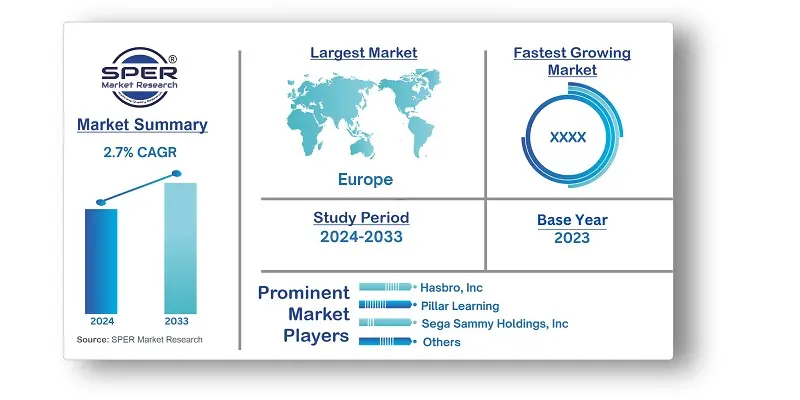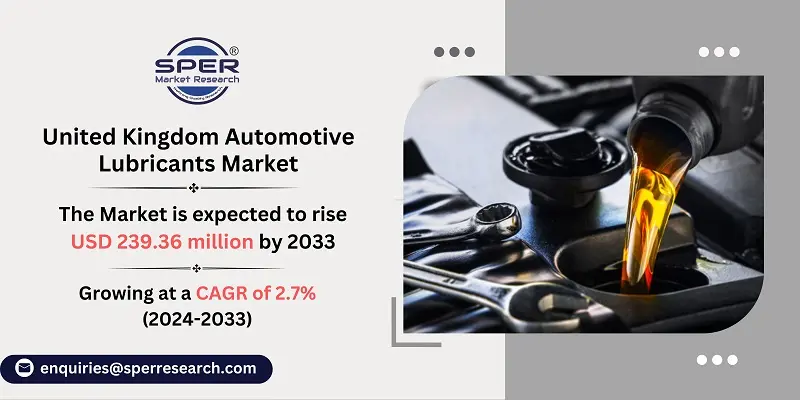
United Kingdom Automotive Lubricants Market Growth, Size, Trends, Demand and Future Outlook
United Kingdom Automotive Lubricants Market Size- By Vehicle Type, By Product Type- Regional Outlook, Competitive Strategies and Segment Forecast to 2033
| Published: Mar-2024 | Report ID: CHEM2432 | Pages: 1 - 103 | Formats*: |
| Category : Chemical & Materials | |||
- January 2022: Effective April 1, ExxonMobil Corporation was divided into three business lines: ExxonMobil Upstream Company, ExxonMobil Product Solutions, and ExxonMobil Low Carbon Solutions.
- June 2021: TotalEnergies and the Stellantis Group renewed their partnership to collaborate across multiple segments. In addition to renewing agreements with Peugeot, Citroën, and DS Automobiles, the new alliance also includes Opel and Vauxhall. This relationship covers lubricant creation and innovation, first-fill in Stellantis group vehicles, Quartz lubricant advice, and shared use of TotalEnergies charging stations, among other things.
- April 2021: Texaco Lubricants launched three new engine lubricants to its successful Texaco Havoline ProDS line, each with manufacturer certification. The oils are designed to give increased wear protection even with a 2 micron lubrication coating.


| Report Metric | Details |
| Market size available for years | 2020-2033 |
| Base year considered | 2023 |
| Forecast period | 2024-2033 |
| Segments covered | By Vehicle Type, By Product Type |
| Regions covered | Eastern Region, Western Region, Southern Region, Northern Region |
| Companies Covered | BP PLC (Castrol), CHEVRON Corporation, Exol Lubricants Limited, ExxonMobil Corporation, FUCHS, LIQUI MOLY, Morris Lubricants, Petronas Lubricants International, Royal Dutch Shell Plc, Total Energies. |
- Additive Companies
- Agriculture Industry
- Automotive OEMs
- Base-oil Companies
- Construction and Mining Industry
- Food Processing Industry
- General Manufacturing Industry
- Lubricants Manufacturers and Distributors
- Metal Production Industry
- Power Generation Industry
- Refining Companies
- Others
| By Vehicle Type: |
|
| By Product Type: |
|
- United Kingdom Automotive Lubricants Market Size (FY’2024-FY’2033)
- Overview of United Kingdom Automotive Lubricants Market
- Segmentation of United Kingdom Automotive Lubricants Market By Vehicle Type (Commercial Vehicles, Motorcycles, Passenger Vehicles)
- Segmentation of United Kingdom Automotive Lubricants Market By Product Type (Engine Oils, Greases, Hydraulic Fluids, Transmission & Gear Oils)
- Statistical Snap of United Kingdom Automotive Lubricants Market
- Expansion Analysis of United Kingdom Automotive Lubricants Market
- Problems and Obstacles in United Kingdom Automotive Lubricants Market
- Competitive Landscape in the United Kingdom Automotive Lubricants Market
- Impact of COVID-19 and Demonetization on United Kingdom Automotive Lubricants Market
- Details on Current Investment in United Kingdom Automotive Lubricants Market
- Competitive Analysis of United Kingdom Automotive Lubricants Market
- Prominent Players in the United Kingdom Automotive Lubricants Market
- SWOT Analysis of United Kingdom Automotive Lubricants Market
- United Kingdom Automotive Lubricants Market Future Outlook and Projections (FY’2024-FY’2033)
- Recommendations from Analyst
1.1. Scope of the report1.2. Market segment analysis
2.1. Research data source2.1.1. Secondary Data2.1.2. Primary Data2.1.3. SPER’s internal database2.1.4. Premium insight from KOL’s2.2. Market size estimation2.2.1. Top-down and Bottom-up approach2.3. Data triangulation
4.1. Driver, Restraint, Opportunity and Challenges analysis4.1.1. Drivers4.1.2. Restraints4.1.3. Opportunities4.1.4. Challenges4.2. COVID-19 Impacts of the United Kingdom Automotive Lubricants Market
5.1. SWOT Analysis5.1.1. Strengths5.1.2. Weaknesses5.1.3. Opportunities5.1.4. Threats5.2. PESTEL Analysis5.2.1. Political Landscape5.2.2. Economic Landscape5.2.3. Social Landscape5.2.4. Technological Landscape5.2.5. Environmental Landscape5.2.6. Legal Landscape5.3. PORTER’s Five Forces5.3.1. Bargaining power of suppliers5.3.2. Bargaining power of buyers5.3.3. Threat of Substitute5.3.4. Threat of new entrant5.3.5. Competitive rivalry5.4. Heat Map Analysis
6.1. United Kingdom Automotive Lubricants Market Manufacturing Base Distribution, Sales Area, Product Type6.2. Mergers & Acquisitions, Partnerships, Product Launch, and Collaboration in United Kingdom Automotive Lubricants Market
7.1. United Kingdom Automotive Lubricants Market Value Share and Forecast, By Vehicle Type, 2024-20337.2. Commercial Vehicles7.3. Motorcycles7.4. Passenger Vehicles
8.1. United Kingdom Automotive Lubricants Market Value Share and Forecast, By Product Type, 2024-20338.2. Engine Oils8.3. Greases8.4. Hydraulic Fluids8.5. Transmission & Gear Oils
9.1. United Kingdom Automotive Lubricants Market Size and Market Share
10.1. United Kingdom Automotive Lubricants Market Size and Market Share By Vehicle Type (2020-2026)10.2. United Kingdom Automotive Lubricants Market Size and Market Share By Vehicle Type (2027-2033)
11.1. United Kingdom Automotive Lubricants Market Size and Market Share By Product Type (2020-2026)11.2. United Kingdom Automotive Lubricants Market Size and Market Share By Product Type (2027-2033)
12.1. United Kingdom Automotive Lubricants Market Size and Market Share By Region (2020-2026)12.2. United Kingdom Automotive Lubricants Market Size and Market Share By Region (2027-2033)12.3. Eastern Region12.4. Northern Region12.5. Southern Region12.6. Western Region
13.1. BP PLC (Castrol)13.1.1. Company details13.1.2. Financial outlook13.1.3. Product summary13.1.4. Recent developments13.2. CHEVRON CORPORATION13.2.1. Company details13.2.2. Financial outlook13.2.3. Product summary13.2.4. Recent developments13.3. Exol Lubricants Limited13.3.1. Company details13.3.2. Financial outlook13.3.3. Product summary13.3.4. Recent developments13.4. ExxonMobil Corporation13.4.1. Company details13.4.2. Financial outlook13.4.3. Product summary13.4.4. Recent developments13.5. FUCHS13.5.1. Company details13.5.2. Financial outlook13.5.3. Product summary13.5.4. Recent developments13.6. LIQUI MOLY13.6.1. Company details13.6.2. Financial outlook13.6.3. Product summary13.6.4. Recent developments13.7. Morris Lubricants13.7.1. Company details13.7.2. Financial outlook13.7.3. Product summary13.7.4. Recent developments13.8. Motul13.8.1. Company details13.8.2. Financial outlook13.8.3. Product summary13.8.4. Recent developments13.9. Petronas Lubricants International13.9.1. Company details13.9.2. Financial outlook13.9.3. Product summary13.9.4. Recent developments13.10. Q8Oils13.10.1. Company details13.10.2. Financial outlook13.10.3. Product summary13.10.4. Recent developments13.11. Royal Dutch Shell Plc13.11.1. Company details13.11.2. Financial outlook13.11.3. Product summary13.11.4. Recent developments13.12. TotalEnergies13.12.1. Company details13.12.2. Financial outlook13.12.3. Product summary13.12.4. Recent developments13.13. Others
SPER Market Research’s methodology uses great emphasis on primary research to ensure that the market intelligence insights are up to date, reliable and accurate. Primary interviews are done with players involved in each phase of a supply chain to analyze the market forecasting. The secondary research method is used to help you fully understand how the future markets and the spending patterns look likes.
The report is based on in-depth qualitative and quantitative analysis of the Product Market. The quantitative analysis involves the application of various projection and sampling techniques. The qualitative analysis involves primary interviews, surveys, and vendor briefings. The data gathered as a result of these processes are validated through experts opinion. Our research methodology entails an ideal mixture of primary and secondary initiatives.



Frequently Asked Questions About This Report
PLACE AN ORDER
Year End Discount
Sample Report
Pre-Purchase Inquiry
NEED CUSTOMIZATION?
Request CustomizationCALL OR EMAIL US
100% Secure Payment






Related Reports
Our Global Clients
Our data-driven insights have influenced the strategy of 200+ reputed companies across the globe.




















